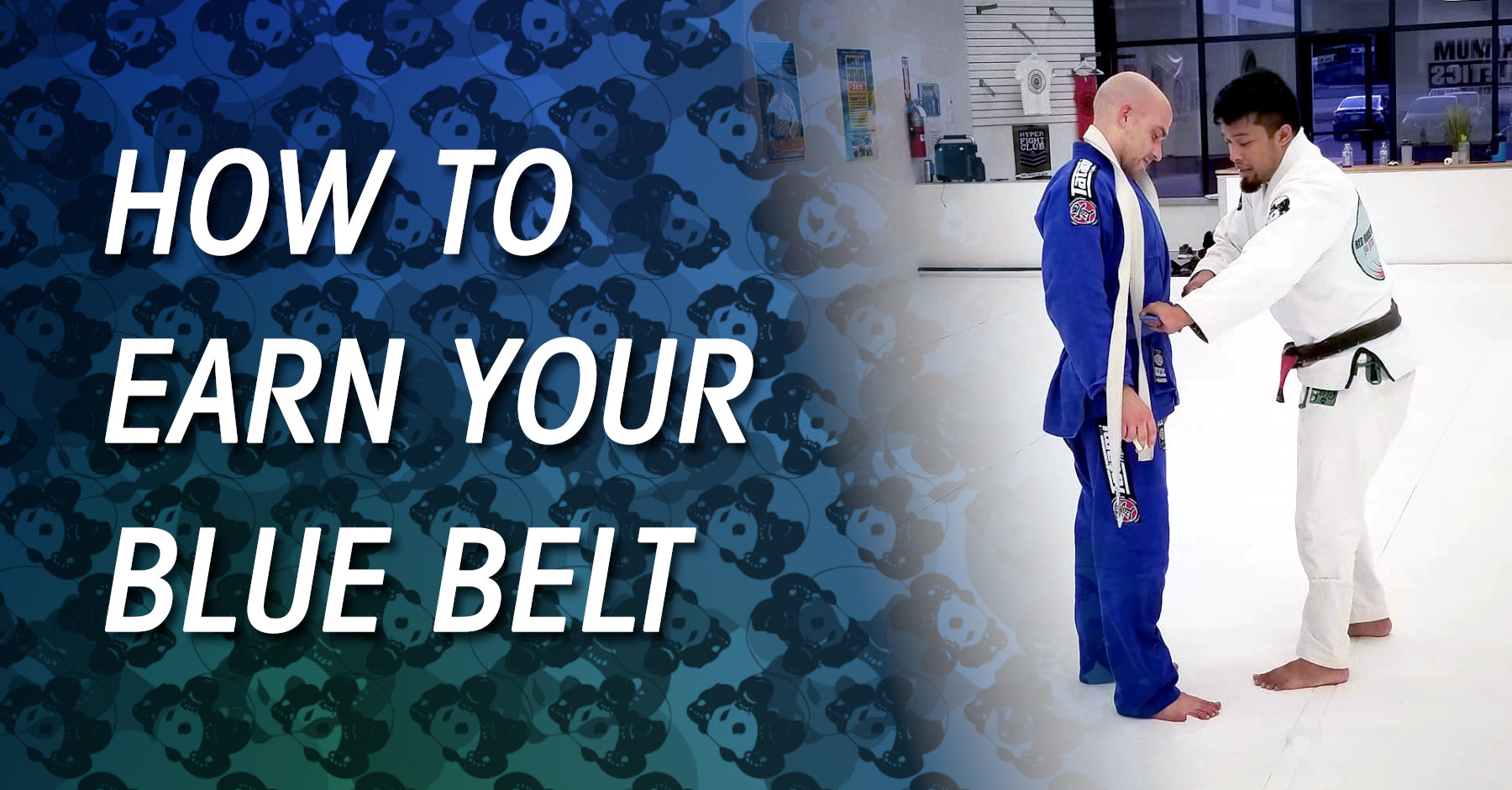
The Right Approach to Earning Your Blue Belt
Over the past month, I’ve run two workshops with my students that focused on goal setting, gameplan building, and developing an understanding of the core concepts of Brazilian jiu-jitsu. As part of the workshop, I have people write down their short, medium, and long-term goals for BJJ. A common one among white belts is “to get my blue belt”. I imagine many of you reading this share that goal, so let’s talk about how to reach it.
First off, you should know that tying your goals to belt ranks tends to be problematic. Focusing too much on belts as a status symbol can lead to measuring yourself in unhealthy ways against others which can contribute to a toxic gym culture. I covered this in The Right and Wrong Way to Think About Belts.
But let’s assume your goal of earning a blue belt is for the right reasons and what you really mean is “I want to learn BJJ and gain the skills that make me worthy of a blue belt”. How can you work toward that goal?
When setting goals, it can help to look at them as either being outcome-based or process-based. To explain these two approaches, I’ll give you examples of both.
Examples of outcome goals:
- Earn my blue belt
- Win gold at a tournament
- Finally tap out my gym nemesis
- Develop a “good guard”
The problem with goals like these is that the desired outcomes are often out of your control. That doesn’t mean you can’t have the goal, since they can be very motivating, but that you need to back it up with a plan that can actually get you there. This is where process goals come in.
Examples of process goals:
- Train 3 times per week for all year
- Compete twice in the next 6 months
- Do 10-20 extra reps of whatever you’re working on every class
- Stretch after every class
Process goals focus on the actions you take along the way, and they tend to reinforce the good habits you are trying to build. These goals should be specific actions you can take that are entirely within your control. When you have an outcome goal, make several process goals that align with it that will keep you on track.
To use weight loss as an example, you may have the outcome-based goal of losing X number of pounds by a certain date. Focusing on the result you want without giving much thought to how you get it, you may resort to unhealthy or last ditch methods like fad diets, crash dieting, sauna suits, etc. By setting process goals like “Create a weekly meal plan every Sunday night” or “Eat a serving of vegetables with every meal”, you give yourself actionable steps to take and you ensure you don’t betray the spirit of the bigger goal, which is really “to get to a healthier weight and maintain it”.
For more examples of good goals, check out Nelson’s popular article from a few years ago called Brazilian Jiu-Jitsu goals that do not involve becoming a world champion.
With goal setting theory out of the way, how do you actually get that blue belt? For most of you reading this, I’m not your instructor so I can’t really say, but I can give you my best guess. Below is a list of traits I expect a person to have as they approach blue belt. Having talked to many instructors about their blue belt expectations, I’d say most schools have similar standards.
Attributes of a blue belt:
- Good base and balance while in top positions
- Good posture and hand placement, especially from bad positions and in guard
- Does not make big mistakes in basic positions
- Stays calm and does not panic in bad positions
- Able to skillfully perform two or more basic techniques from each major position
- In good shape physically and able to finish rounds of sparring without gassing out
- Capable of defending themselves against an untrained attacker
- Does well sparring or competing against most white belts and some blue belts (with allowances for differences in size, strength, age, etc.)
- Regular attendance over 12 to 24 months (2 or more classes per week)
- Shows a positive attitude towards fellow students, pays attention to instruction, and works hard in class
Do you see yourself in this list? Where do you still need to improve? That could be a good prompt for goal setting.
This list does not give the specific techniques, since that’s somewhat different from school to school, but you can’t go wrong with the classic basics. For inspiration for what techniques to work on, check out my article 5 Things Every White Belt Must Learn Before Blue Belt and Nelson’s Top 4 Beginner Sweeps and 6 Submissions Every White Belt Needs to Master. You can also get lost in our White Belt Questions, Black Belt Answers playlist on YouTube, which now contains over 225 videos (a little over 8 hours and 35 minutes) of us answering questions for Reddit's r/bjj White Belt Wednesdays.
What I hope you take away from this is that setting big goals and even wanting to rank up can be good for motivation, but that you need to focus on the process and what you do day to day if you hope to reach it.
Want to continue your white-to-blue-belt education? Read Surviving the First Year of BJJ: A Crash Course for White Belts and Advice for Newbie White Belts and Anxious Blue Belts.
Other articles:
Quick links
Contact us
About us
Quality BJJ gear at fair prices, available all year. Founded in 2012 to provide an alternative to high-cost, limited edition gis. Dive into the BJJ lifestyle with us—join the Panda Nation!"
